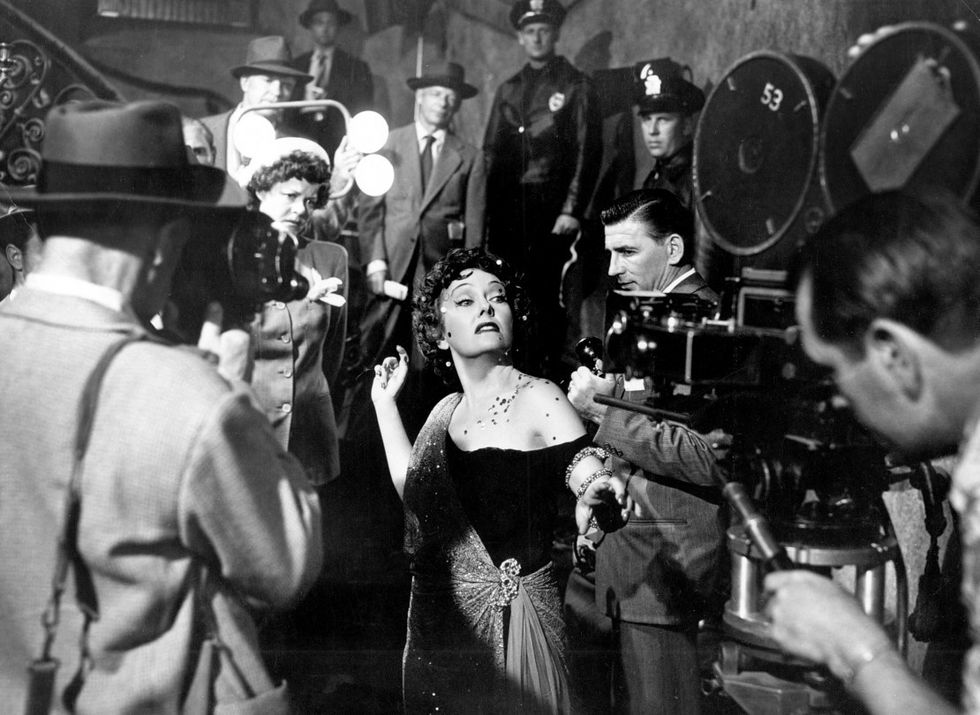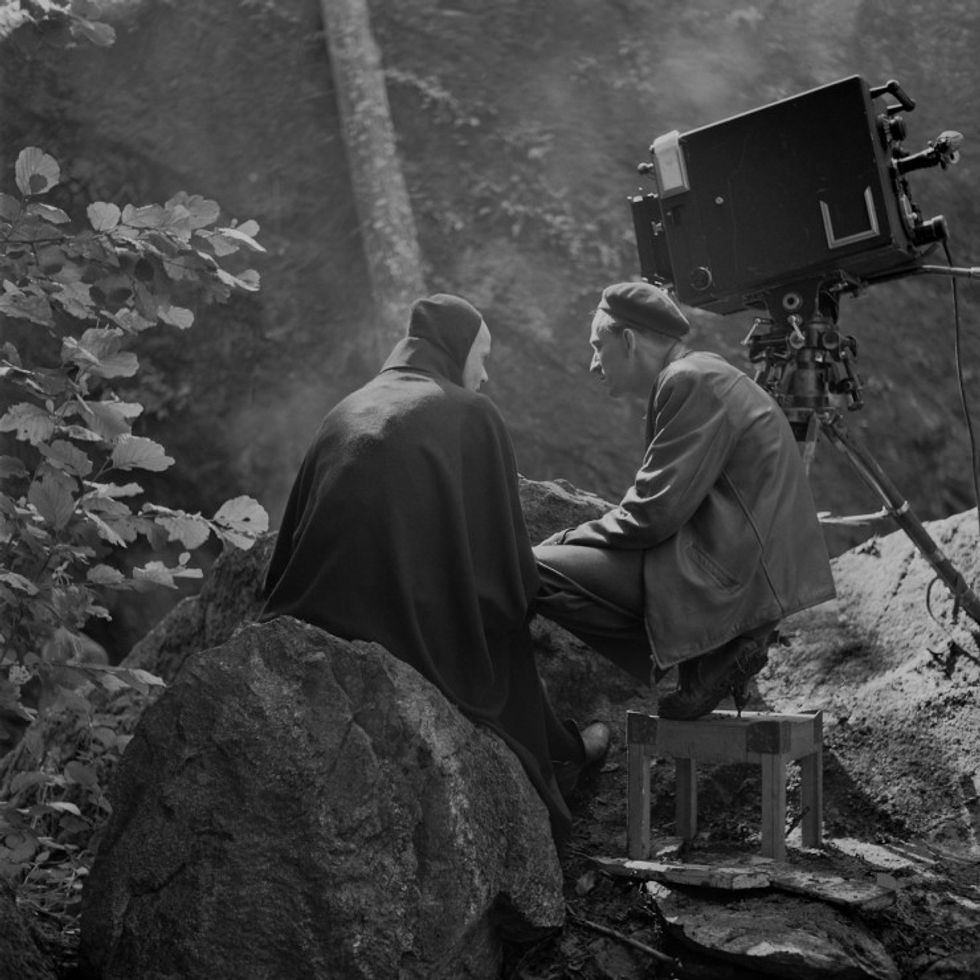Negotiation Skills for Crew: 12 Tips for Getting What You Need On Set
Here's how to help ensure the best rates and on-set working conditions.

Congratulations, you work in the movie business! Filmmaking is an exciting blur of living the dream, right? Welcome to a lifetime of above-the-line folks trying to get the most out of...everything. Every extra hour you work is another hour the director can use to get more coverage, and every extra hour you work without pay is an opportunity for funds to go somewhere else in the project. This can get out of hand, with absurd hours and unsafe sets.
Figuring out how to create safe, logical, and respectful experiences while still being the passionate and positive filmmaker you want to be are waters you will probably navigate your whole career. Particularly early on, you may be on sets with smaller budgets and with less experienced producers, and knowing how to negotiate to a place that makes sense all around is a vital skill.
You want to stick up for yourself and your crew, in a polite, positive, and effective way.
How well your negotiation goes is likely strongly tied to your approach. Their side doesn’t have to lose for you to win. You and your conversation partner are two friends working on an issue, and you both want to smoothly come to a resolution and move on. If something is out of place on a deal memo, don’t assume there is malicious intent. Assume the issue wasn’t a priority for the person writing the deal memo, and if you talk your concerns out with them and suggest various ways of redress, ideally you’ll come to a good agreement. If there is malicious intent, disrespect, or a refusal to work things out, well, ultimately, we hope you don’t continue to work with those people. You want to stick up for yourself and your crew, in a polite, positive, and effective way.
Adam Richlin and Joe Astarita work in the grip and electric departments, and they have been living the dream and navigating the occasional nightmare of working in film for a combined total of seventeen years. Talking about money on set can be a minefield. Through Richlin and Astarita’s combined knowledge they present twelve tips on how to be an effective negotiator while remaining cordial.
While many of these concepts could easily go under General Life Lessons, the advice below applies specifically to on-set working conditions and rate negotiations.

1. Ask for what you want
Raise your hand if you have ever heard a producer ask, “what’s the lowest rate you’d do this job for?” Look around. Why would you have raised your hand? This is an online article. But it is a common question that doesn’t exactly resonate respect. (A favorite answer is, “What’s the highest rate you’d pay me?”). The point is that if you think of your rate as 2X – 7X, but you believe that is too high for the production in question and you quote 3X, you’ve already lost over half of your negotiation space before any back and forth has started.
It is perfectly acceptable to ask what the budget of the project is, and to let this inform your request. Many professionals have a range of rates they’ll accept based on different factors, such as the content of the project, who they’ll be working with, if it has been a slow month, if they have a crush on the gaffer...
2. Avoid the blame game
It usually doesn’t matter whose fault an issue is. What’s more important is how we, as a team, are going to fix it. Yes, perhaps we are now rushed because the keys to the truck couldn’t be found for the first two hours of the day. Having an argument about who to throw under the bus/truck isn’t lighting the scene. Focus forward.
If the discussion is about a situation on set, know what happened (and what should happen, and what options are on the table).
3. Shut up and listen
You may think you already know the story, but let the other person tell you anyway. It can be soothing for people to go over what happened from their perspective, and you may learn new facts or find that the person doesn’t have the full story. Don’t cut people off. That’s rude. On set, where time is the hottest of commodities, you may get wrapped up in that mindset and want to interrupt someone because you think you know where the sentence is going. Don’t do that.
4. Do your homework
If the discussion is about a situation on set, know what happened (and what should happen, and what options are on the table).
If you are having a hiring conversation, it is helpful to know the budget, what the last person was paid, and what folks are normally paid in this position at other companies. Do you have other work possibilities on the table? Know the options, and think about them before the negotiation.
5. Always be willing to walk away
Your strongest bargaining tools are your own two feet. If a producer doesn’t want to meet you halfway, you can always get out of there. Often, they are playing hardball and may come back around. But if you are going to get up, you have to be willing to leave and let it go.
“We all need money,” Astarita says, “but sometimes sanity is too much of a premium. If you get that gut feeling that this isn’t for me, you’ll feel better about yourself if you just leave.”
A production that you go into feeling bitter about the rate is a production you shouldn’t go into at all.

6. Understand the world from their perspective—and use it
When you first start working on set, you are probably thinking mostly about your department. When you are entrenched in grip-side, you may not be aware of what’s going on in the world of production. “They just sit there with their computers all day,” you scoff, lugging your c-stands by in a haughty fashion.
However, when you approach a producer with a concern, you don’t know what kind of day they are having or how many fires they have been asked to put out in the past thirty minutes. Try to understand the production perspective, and let them know you understand it. Approach as a calm presence: set is chaotic; be the port in the storm. The two of you are players on the same team who want to make this movie. Physically stand next to your conversation partner. Present choices to help shape how they see the negotiation, like “It is $200 USD to hire another person, or we go with paying three people two hours of OT. Which makes more sense to you?”
Approach as a calm presence: set is chaotic; be the port in the storm.
7. Bring in new options
If the production can’t pay the rate you are looking for, perhaps there are other approaches to satisfying both of your needs. Will the production offer overtime, meal penalties, travel reimbursement, hotel rooms, points, a particular credit, or guarantee a job on the producer’s next higher budget production? Can they rent your gear? Can they pay you to drive a vehicle?
That being said, take caution: almost no one Richlin or Astarita knows who accepted deferment or points has ever had those things result in funds down the line. It can be a nice thought but presume those things aren’t ever going to materialize financially.
Richlin reflects, “An old psychological trick is that if you ask your child to get ready for bed, they’ll say no. But if you ask them if they’d rather put on their pajamas or brush their teeth, they’ll pick one or the other. Frame the choices. If a producer wants to pay you below your rate, and not send out a check for a month, you can say that you are happy to accept your full rate at Net30, or a discounted rate if you can get a check when the gate then the truck closes. You’ve presented two reasonable options for consideration."
Experienced crew see a red flag when a producer tries to hurry the signing of the deal memo.
8. Don’t be in a hurry
With rate negotiations and deal memos, don’t let yourself be rushed. Experienced crew see a red flag when a producer tries to hurry the signing of the deal memo. That’s a moment to step back and look at the whole situation.
Set can be a blur, and Astarita thinks the last ten minutes of lunch can be a good time to approach production with a concern. If there is pushback or it’s a more serious issue, talking with other crew and other departments might be necessary. It’s easy to ignore one person; it’s hard to ignore a group. You want things to go smoothly, so sometimes it helps to collect opinions, i.e. asking crew, “y’all want a six-hour turn around tomorrow?’ and then relaying unhappiness to production with, “a number of people are upset and I’d like to talk about it on our behalf.”
Don’t name names without permission. A good reply to the, “well who is upset?!” question is: “If you want to have a conversation with your crew, I encourage you to do so.” You want problems to be solved, not people singled out as the “bad people who have an issue.”
“Time pressure is just a ball in the air,” Richlin says. “Keep it in their court. If they say ‘we are in a rush because we shoot tomorrow,’ a response can be, ‘Okay, so what do you want to do about this issue to resolve it quickly?’”
9. Keep your cool
Richlin suggests stepping back and clearing your head before conversations that might be difficult. Give some space, and don’t get hot-headed. Astarita advises, “You always want to be the matador; never the bull.”
People who are angry are usually stressed out or afraid. Sets are full of overworked and tired humans. Sometimes people just need to lose it a little bit, and your role can be to calmly listen and let them vent, so you can both get back down to earth and move forward.
“You always want to be the matador; never the bull.”
10. Focus on their pressure
Learn how to read a room, because a little empathy can go a long way. If a person is under stress—say, if the Assistant Director just got screamed at by the director—now may not be the time to approach them about your electric department issue. Unless, of course, and always, there is a safety concern.
A productive way to approach busy people on set is to simply say, “Hey, I need five minutes, low priority, come to me when you can,” or “Hey, I need ten minutes, kind of high priority, maybe put it next on your list if you can.” That way, when the person comes to you, it’s with a clear head for a team effort.
It’s disingenuous to exploit fear or pressure. Richlin has a gear rental business. If someone comes to him late on a Friday afternoon needing gear for Saturday morning, he could likely charge a bundle, as the production is trapped and on a time crunch. But, in the long-term, that is taking advantage of the production’s situation and isn’t likely to create appreciative and loyal customers.
Talk in the universal set language of time and money.
11. Present the choice between profit and time
When negotiating with producers on a film, it can be useful to talk in the universal set language of time and money. This brings the conversation down to math, which is harder to argue about than feelings. And if you save people time and money, they’ll remember you for it.
12 Play devil’s advocate for each other
If you have a concern you think will be met with resistance, you can have a practice conversations with folks in your department before talking with production. You can anticipate responses to your concern, and have a calm, no-pressure space to reflect on those, and either come up with counter-arguments or even—gasp!— change your opinion.

Safety First
You should never be made to feel ashamed for voicing your opinion about things you think are wrong, although knowing when to speak up is also key. Trust your instincts, and if someone wants to make you feel bad for expressing your concerns, that is a life problem of theirs, which hopefully you won’t have to deal with for long.
You should always speak up if you have safety concerns.
Trusting your gut and voicing your opinion is especially important in regards to safety. People die in this business, often in ways that could be avoided. You should always speak up if you have safety concerns. Green producers may try to save a few bucks and borrow a gun from an uncle instead of going through proper channels and taking proper safety precautions. While it may not be best practice to holler out across the set, “if I see one more live bullet I’m shutting this place down!!” you can take your raging contempt and put it in a box to the side. Instead, approach the AD and say something like, “I need to have a conversation with you right now.”
At this point, you are likely not negotiating, but politely insisting on safe practices. As Richlin puts it: “The statement ‘That’s not safe’ should never be followed with the word ‘but.’” Set is a high-stress situation and sometimes priorities can get wackadoodle; it is the job of everyone on set to speak up and keep each other safe.
Final thoughts
When not on set, Astarita and Richlin suggest negotiating by phone as opposed to email—and then following up with an email to have a record of the agreement. They aren’t against you working for free—but there should be something gained from it: you should be paid in some combination of experience, credit, and the chance to meet working crew who can hire you in the future. Some producers think they can do whatever they want. After all, a producer’s job is to push forward, and sometimes that energy can get misplaced. Feel comfortable bringing up concerns. If you are on a lower rung on the ladder, consider asking the head of your department to be a spokesperson.
Ultimately, you want to work with people whose priorities align with yours. You want to approach conversations in a level-headed manner and as a team player. That way, you will find crews that you can work with and learn from throughout your career.

 No Film School's coverage of
No Film School's coverage of 









